In Defense of Weeds
-
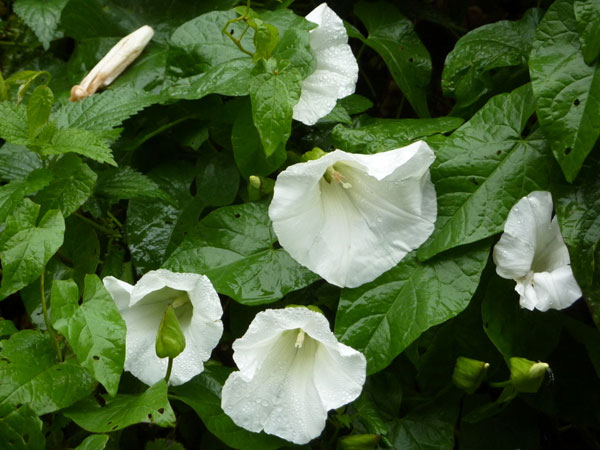 Photograph by foto footprints via Flickr.
Photograph by foto footprints via Flickr.BINDWEED
Bindweed is the archetypal weed, being both an interloper and awesomely adaptive. It’s also ambivalent, as beautiful in flower as its close relatives the morning glories. The big, “granny’s nightgown” flowers of hedge bindweed came to the United States with early settlers. Bindweeds thrive on weeding and ploughing. Every fragment of chopped root or stem can generate a new plant. It can cover 30 square yards in a season. If it’s eaten by cattle, chemicals in the stem respond to the growth hormones in the animals’ saliva and grow even faster. Doff your hat in respect before you try to hoe it out.
Related article: "Consider the Weed."
-
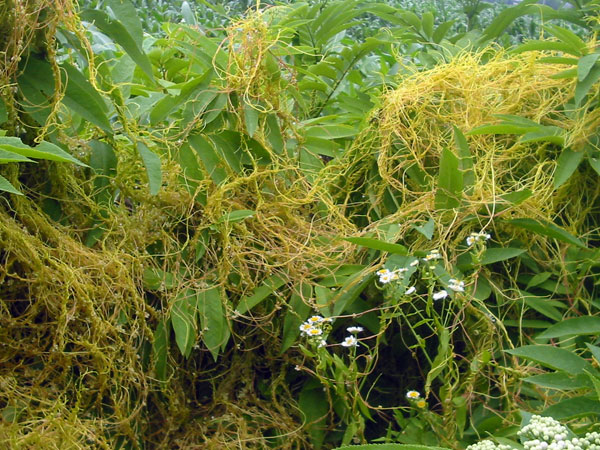 Photograph by Bogdan via Wikipedia Commons.
Photograph by Bogdan via Wikipedia Commons.DODDERS
A cosmopolitan family of semiparasites that come in all manner of varieties, each chemically adapted to a specific host. Dodders have no chlorophyll and no roots. The growing stems edge forward with the coiling movements of sidewinders, until they chemically “sniff” their host, and then head toward it, suckering spikes at the ready. The variety that preys on tomatoes has been filmed rejecting globes of red liquid and dyed tennis balls, and slithering decisively toward a piece rubber impregnated with tomato-scent chemicals.
-
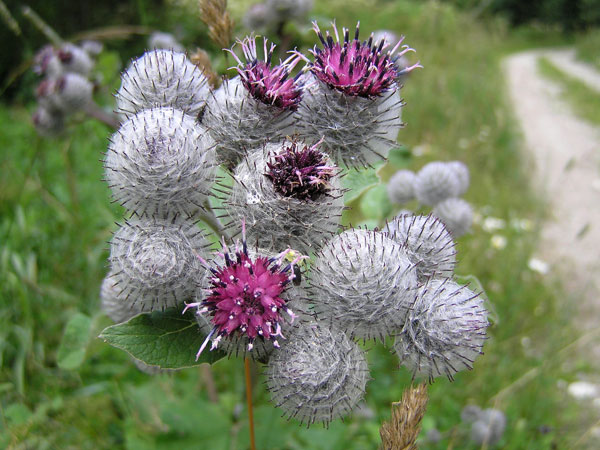 Photograph by Epukas via Wikipedia Commons.
Photograph by Epukas via Wikipedia Commons.BURDOCK
Most American weeds originated in Europe, a legacy of colonialism that outstayed the colonists. Burdock’s floppy gray-green leaves were a favorite foreground ornament of 17th- and 18th-century landscape painters. But it’s had a more modern practical use. The seed-heads—called “burrs”—are covered with hooked spines, which attach themselves to passing animals and get dispersed. In the 1940s the Swiss inventor George de Mestral, removing a bushel from his dog’s fur, was inspired to create Velcro. It was patented in 1951, one of the first examples of the burgeoning science of bio-engineering.
-
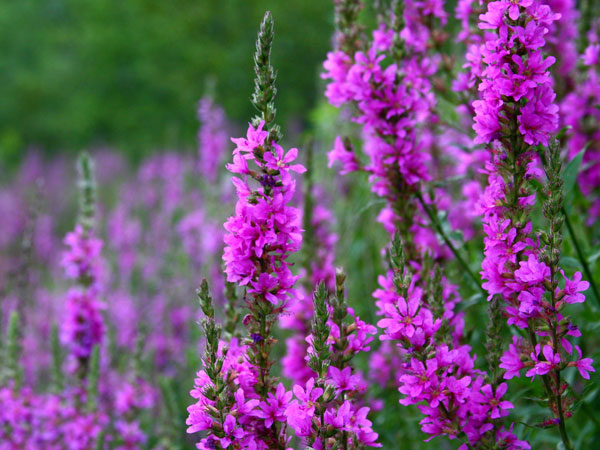 Photograph by Muffett via Flickr.
Photograph by Muffett via Flickr.PURPLE LOOSESTRIFE
One of the most enchanting European wetland flowers. The pre-Raphaelite John Everett Millais painted its magenta sprays on the riverbank in his famous picture of the drowning Ophelia. It arrived in the New World in the early 1800s, probably as a stowaway in ships’ ballast. It came without any of the munching insects that, above and below ground, keep it in check in Europe, and took off west like any other ambitious immigrant. It has now reached the fragile marshlands of Alaska, forming solid stands—a mile thick in places—which even muskrats cannot penetrate.
-
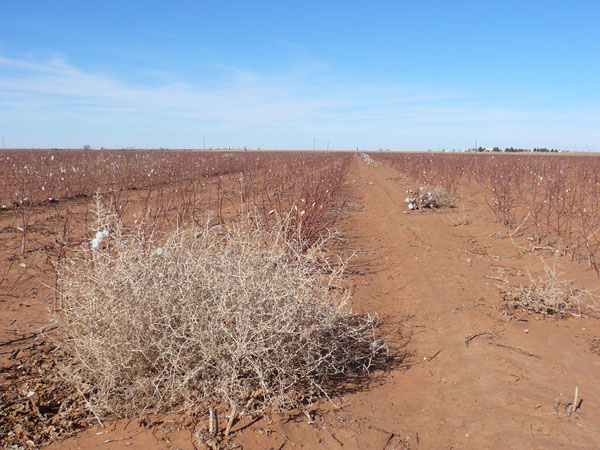 Photograph by K W Reinsch via Flickr.
Photograph by K W Reinsch via Flickr.TUMBLEWEED
A quintessential ingredient of the ambience of Western movies, but also a wonderful example of cinematic anachronism. Tumbleweed—aka Russian thistle—is a native of arid areas of eastern Europe and Asia which arrived in the USA in the late 1870s, mixed up with flax seed brought by Ukrainian immigrants. It didn’t really become established until the early 20th century, some while after the pioneering heydays portrayed in classic Westerns. Tumbleweed’s great trick, in which the dried-out plants detach themselves from the ground and bowl about the desert, scattering seeds as they go, is a typical piece of weed smartness.
-
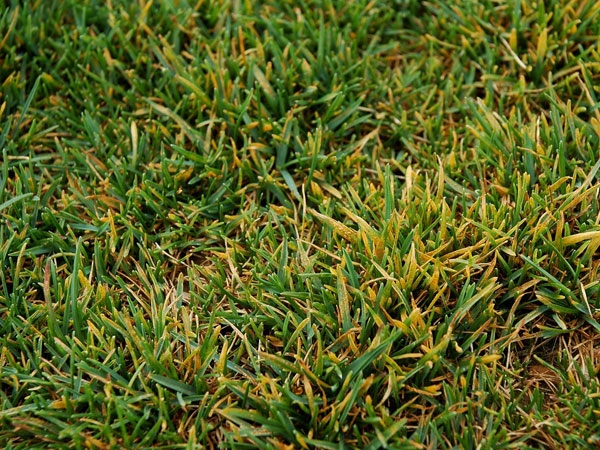 Photograph by Lane Tredway via Flickr.
Photograph by Lane Tredway via Flickr.KENTUCKY BLUE GRASS
Sounds as American as hillbilly, but is another settler introduction. Meadow-grass is a widespread European weed-grass and was introduced to the United States in the fodder, or attached to the hooves, of their cattle. Adapted to the heavy grazing—and heavy hooves—of domestic stock, it soon ramped across grasslands east of the Mississippi, and drove most of the more delicate indigenous grasses close to extinction. But it was good feed and a boon to ranchers, who rebranded it, immortally, as “Kentucky blue grass.”
-
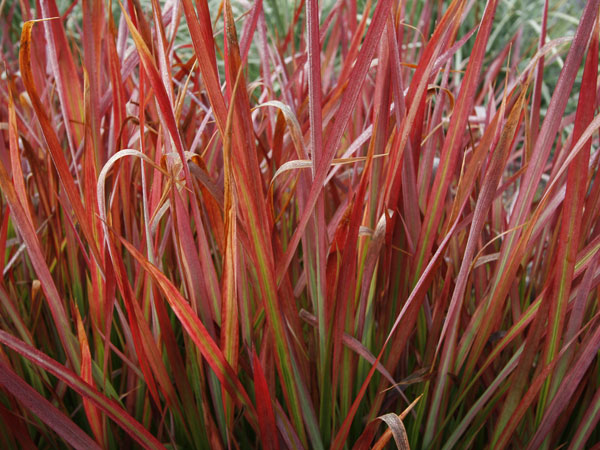 Photograph by Gardening in a Minute via Flickr.
Photograph by Gardening in a Minute via Flickr.COGON
Not all weeds travel east-west. Cogon is a tough grass that is a natural component of the ground vegetation of Southeast Asian forests. When the United States used Agent Orange to obliterate the trees in large areas of this forest during the Vietnam War, cogon rampaged across the landscape. It has overwhelmed attempts to overplant it with pineapple, teak, even the formidable bamboo, and picked up the local tag of “American weed.” There’s some poetic justice in the fact that cogon recently infiltrated the United States in the packaging of imported house-plants, and is now advancing across the southern states.
-
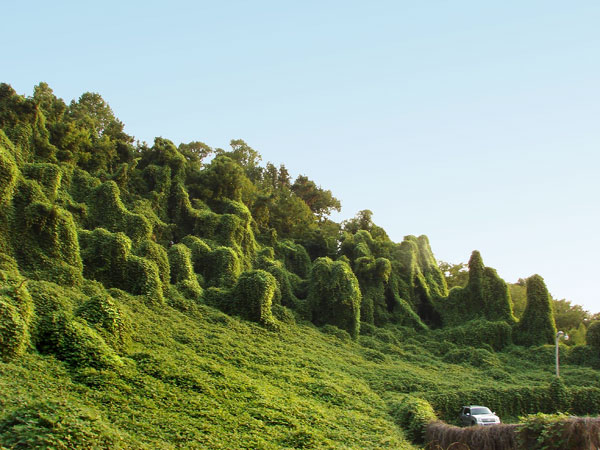 Photograph by SoftCore Studios via Flickr.
Photograph by SoftCore Studios via Flickr.KUDZU
Kudzu is the “vine that ate the South”—aggressive, imperious, its origins the subject of wild conspiracy theories. The true story of its arrival in the United States is that in 1876, the Centennial Exposition in Philadelphia contained a Japanese garden full of that country’s native plants. Kudzu proved very appealing as an ornamental climber and was widely planted in gardens. In the 1920s, a Florida nursery noticed that cattle were browsing on the plants and promoted it as a forage crop. Ten years later the Forest Service started planting the vine to control soil erosion in the dust bowls. But by the 1950s it had broken out of cultivation, and, capable of climbing up to 90 feet at the rate of 1 foot every 12 hours, was swallowing entire forests and houses. It’s a salutary demonstration that even the most beneficent of plants, translocated from the natural control systems of their native habitats, can turn into superweeds.
-
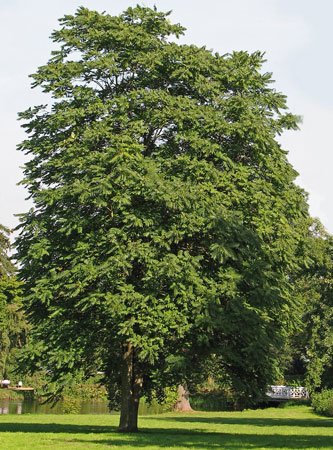 Photograph by DarkOne via Wikipedia Commons.
Photograph by DarkOne via Wikipedia Commons.TREE OF HEAVEN
Not all weeds are, so to speak, “weedy.” Many tree species can behave with the enterprise of wheatfield invaders and flower-border guerrillas. Tree-of-heaven is a popular Chinese ornamental with prodigious powers of both seeding and vertical growth. It gets its name not from some paradisiacal scent (the flowers smell rather disagreeable, but are popular with city bees), but from the speed with which it rockets skyward, sometimes carrying sidewalk slabs with it. In the U.K., during a rubbish collectors’ strike, trees-of-heaven were seen shooting out of unemptied refuse bins. They are one of the great healers of broken and derelict city space, as in Detroit, and already a key component of the post-industrial urban forest across the northern hemisphere.
-
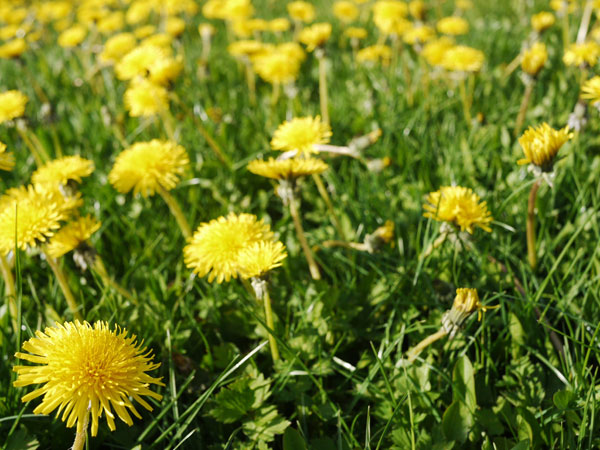 Photograph by the justified sinner via Flickr.
Photograph by the justified sinner via Flickr.DANDELION
The wild plant now grows abundantly in every temperate part of the globe, and has more delights and uses than most high-bred herbaceous dainties. It’s one of the great golden harbingers of spring, yet is hoiked out of lawns by gardeners with an inexplicable taste for monochrome green. Its leaves make an astringent salad, and are now served in all self-respecting restaurants. They are also the safest diuretic on the market. (In Britain, dandelion’s vernacular names include “piss-a-bed.”) Most wild ecosystems are profoundly local and need to be kept so. But dandelion, and indeed the whole urban weed community, are cosmopolitan, and make a botanical lingua franca that binds us all together.
Return to article: "Consider the Weed."